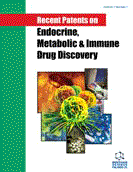Abstract
Type 2 diabetes (T2D) is a heterogeneous disorder that is characterized by chronic hyperglycemia and its prevalence reaches epidemic proportions worldwide. T2D is characterized by a progressive loss of the first phase of insulin secretion in early stages of the disease. The origin of insulin secretion failure is still unknown. As hyperglycemia becomes chronic, pancreatic β-cell undergoes deterioration and destruction. β-Cell destruction by glucolipotoxic-mediated apoptosis and by proinflammatory cytokines actions is important etiological factor in the progression of the disease. The focus of this review is on the signaling pathways engaged by G-protein coupled receptors and tyrosine-kinase receptors which control β-cell function and survival through cell kinases (i.e., cAMP/PKA, IRS/PI3-kinase, and ERK1/2), and as well as on pathways implicated in β-cell dysfunction and death, among them glucotoxicity and lipotoxicity. A better knowledge of these pathways (and of their dysfunctions) will have significant implications for the prevention and management of T2D (patents and design of new drug targets for therapeutic approach), as well as for our general understanding of β-cell failure in this disease. Finally, the current and future molecular targets for designing innovative therapeutic agents with the aim to restore β-cell mass and insulin secretion are reviewed.
Keywords: Pancreatic β-cells, insulin secretion dysfunction, apoptosis, signaling pathways, glucotoxicity, lipotoxicity, therapeutic agents
 4
4





















